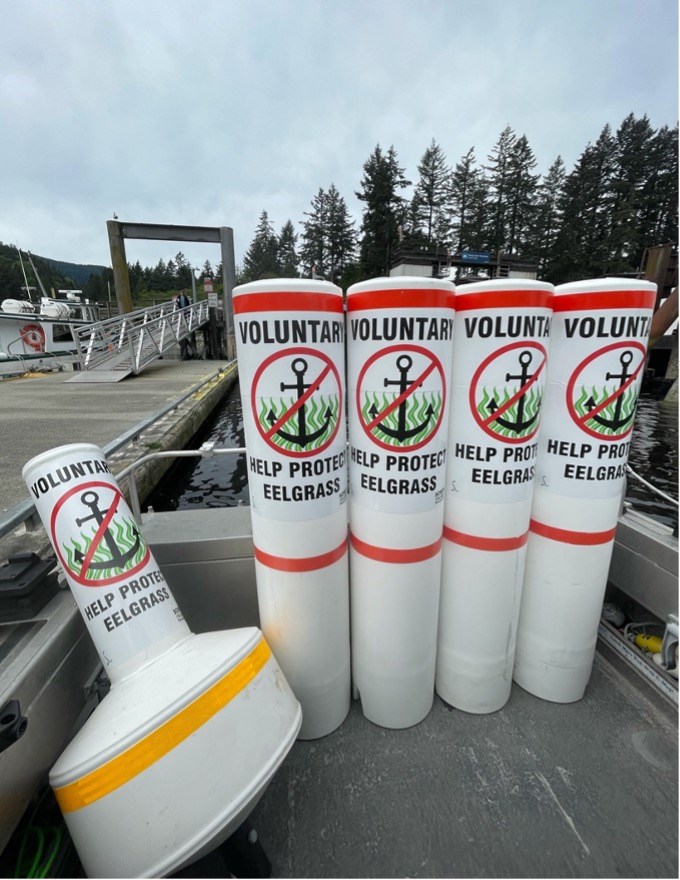The folks implanting eelgrass and adding the voluntary no-anchor zone in Gibsons Harbour are looking to add another zone near the marina breakwater.
As the Healthy Harbour Project is in its final year of a four-year agreement, Nancy Cottingham Powell, the new executive director of Blue Act Marine Society (previously the Gibsons Marine Education Centre Society), presented to a Gibsons committee of the whole meeting last month on how the project has been going and introduced the team’s idea for what could be next.
The four-year collaborative agreement started in 2019, and has since seen the addition of a voluntary no-anchor zone near Armours Beach to protect eelgrass. Eelgrass is an important part of marine habitat, and provides carbon sequestration and habitat for forage fish, among other species, Cottingham Powell said in her presentation.
In 2023, the Healthy Harbour Project team assessed and surveyed the Gibsons Marina breakwater area. Cottingham Powell said the area has optimal conditions for eelgrass habitat, but also a high potential for impacts from the amount of recreational and commercial traffic in that area. Of 10 mooring buoys, three were shading or scouring the seabed. Comparatively, the established voluntary no-anchor zone, the marker buoys are in good condition, and the results of the signs have been “quite good” and largely accomplishing their purpose. No anchored or moored vessels have been found in that area, and although a small anchored floating dock structure, it wasn’t above eelgrass. (Staff said they’ve been in contact with the owner, and ongoing conversations are a work in progress.)
A marine debris survey found a significant amount of debris like bottles, cans, unidentified plastics and derelict crab traps in eelgrass beds near the breakwater. Near the Armours Beach/ch'ḵw'elhp area, there less debris. A clean up event with funding from the Pacific Salmon Foundation removed 1.5 tonnes of debris from the seabed, 35 per cent of which was diverted from the landfill.
Cottingham Powell said the group’s recommendation is to explore adding a voluntary no-anchor zone near the marina breakwater. She identified consultation with key stakeholders as essential. The recommendation could be done in two phases, with the first being a pilot study with public awareness and dialogue. Then, based on those results, the second phased could extend teh conservation zone.
Long-term recommendations include continued monitoring, more mapping and surveying in areas such as Georgia and Pebbles beaches, as well as ongoing marine debris cleanup events.
Cottingham Powell said they are continuing to pursue third party funding. As for the next four years, the group has a number of conservation projects in mind to continue the Healthy Harbour Project.
After the presentation, Mayor Silas White said, “It’s really great to see the progress of this just tremendous partnership.” He commented that it’s both “exciting and impressive.”
Coun. Annemarie De Andrade said the project has exceeded her expectations, and she is supportive.
Council typically does not make a decision during committee meetings following a presentation from a delegation.



